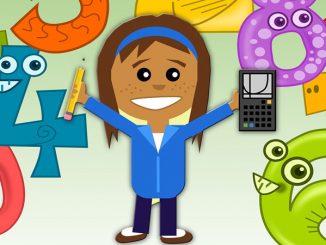
I’m sure you are familiar with the sound depiction of adults speaking in any of the Charlie Brown cartoons—a sound created by a trombone similar to “wah-wah-wah-wah.” For some visual learners, this is what a teacher’s voice can sound like. As a visual learner myself, I realize that often when I am listening to instructions, at some point the voice does indeed sound like the trombone-noise from a Charlie Brown cartoon!
What does it mean to be a visual learner? First, we need to acknowledge the foundational work of Dr. Harold Gardner, who proposed the idea of multiple intelligences or the notion that, “students possess different kinds of minds and therefore learn, remember, perform, and understand in different ways.” As catechists and teachers, we sometimes fall into the pattern of teaching precisely the way we ourselves learn. For instance, when my friend Tom M. used to write lesson plans for religious education, all he ever had students do was read. When I asked him why, he said, “That’s how I learned, and it worked for me.” The problem is that won’t be as effective for those learners who are visual/spatial, bodily/kinesthetic, musical, interpersonal, or logical/mathematical.
Now, on to visual/spatial learners. The most basic way to explain visual/spatial learners is that they think in pictures, shapes, and images, rather than words. Such learners are good at reading maps, are talented artistically or mechanically, and tend to visualize words in order to spell them. What can you do to assist visual/spatial learners?
- Incorporate visual aids, such as maps, posters, icons, objects, or sacred art. When accompanied by visual stimuli, auditory instruction becomes more palatable for visual learners.
- Have visual/spatial learners use a computer when possible, since the computer display provides a visual impact.
- Invite visual/spatial learners to close their eyes and imagine scenes when you are leading a guided reflection or when listening to CDs of dramatized Scripture stories.
- Encourage and incorporate active interaction with physical objects.
- Invite drawing and painting.
- Use videos effectively.
- Use graphs, charts, and diagrams.
- Color-code (using sticky notes) themes and concepts on the board.
- Create graphic organizers of major themes and concepts presented.
- Highlight major concepts on handouts.
- Use symbols in place of words when possible.
- Invite learners to take pictures with their cell phones to capture an idea or concept being taught.
- Use body motion to accompany words.
- Use whiteboards with different color markers.
- Use flashcards, comics, and cartoons.
- Teach important words using word puzzles.
- Play Pictionary.
- Use computer slideshow presentations with images to accompany words.
- Use books with quality illustrations.
The important thing is to remember that there are different ways of being “smart” aside from speaking and writing.
Explore active-learning opportunities in the Finding God: Our Response to God’s Gifts program.





Be the first to comment